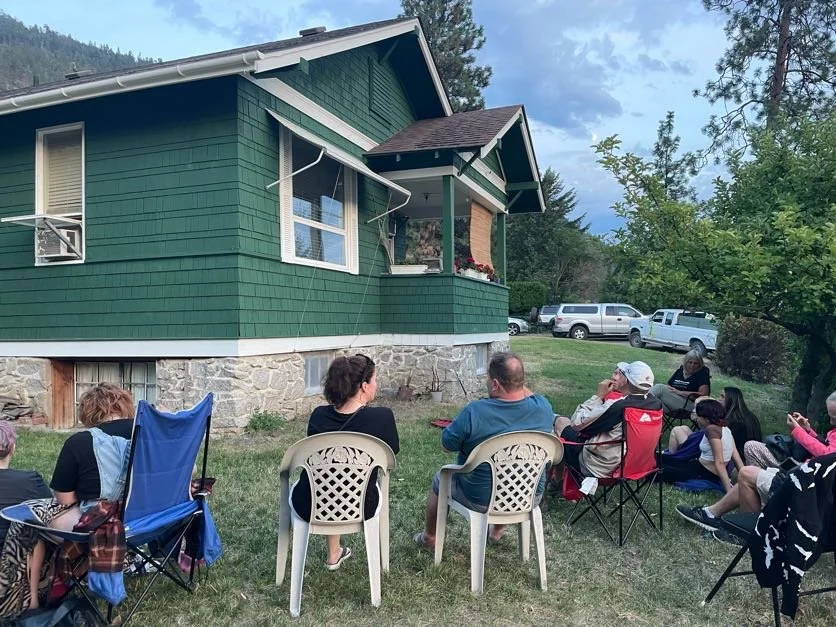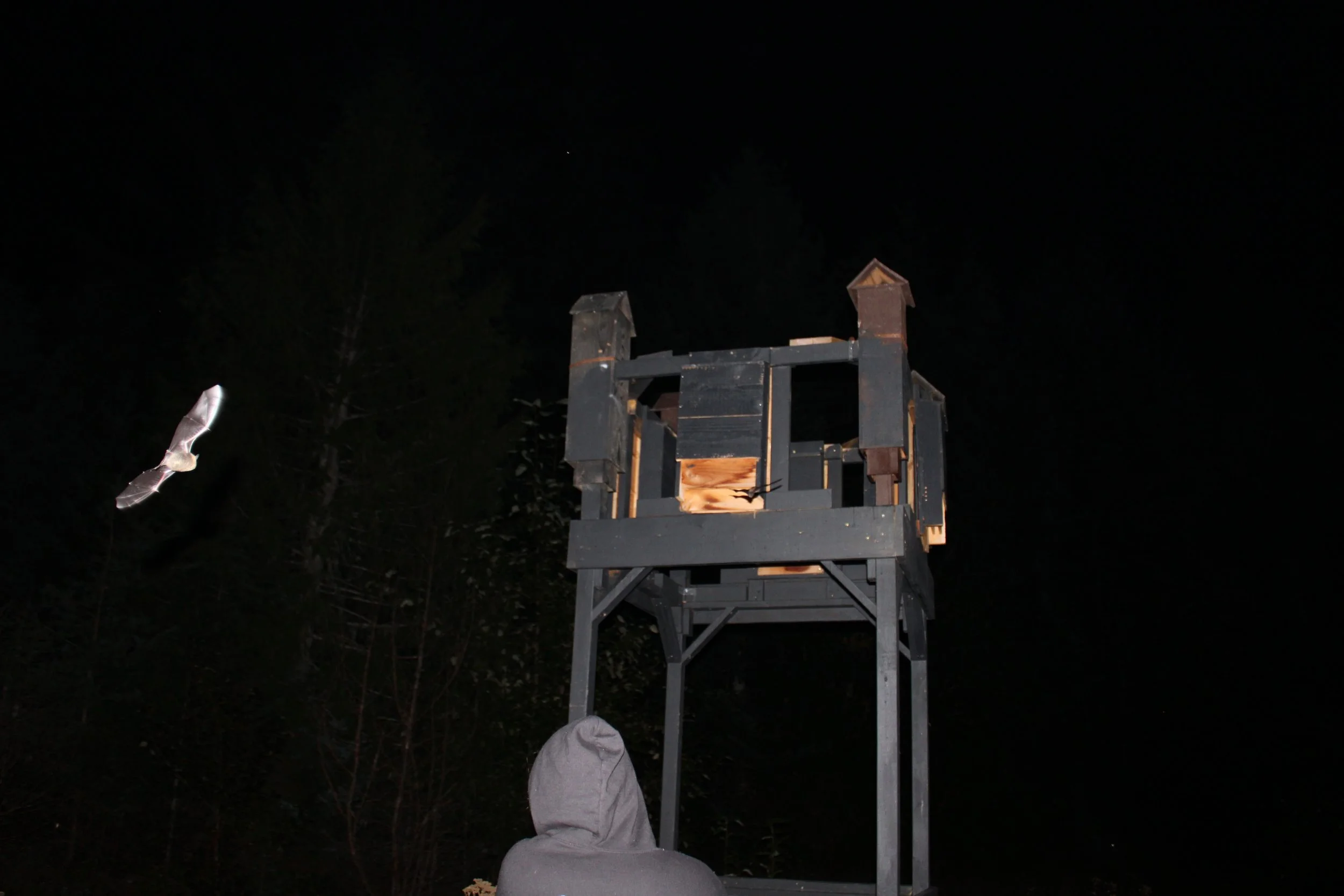One, Two, Three, Four - Let’s Count Bats!
Become a Bat Citizen Scientist and Participate in the BC Annual Bat Count
The BC Community Bat Program is calling for volunteers to get involved in the BC Annual Bat Count. Starting June 1st, bat biologists and volunteers will be enjoying late nights, counting bats at maternity roosts throughout the province.
Volunteers ready to start counting bats that will emerge from the gable vent. These conservation-minded homeowners manage their house to safely allow the bat colony to live in the attic. Photo by Alexis Olynyk.
“It’s an amazing experience, staying up until the darkness sets in while counting bats,” says Julianna Laposa-Wilde, Southern Vancouver Island coordinator for the BC Community Bat Program. “All your senses come alive at dusk. You hear the birds quieting down, see the light disappearing and the stars starting to shine, your skin feels the coolness of the night. All the while you are focusing on one spot as you count the bats one by one.”
Female bats roost together in summer and raise their young in maternity colonies. Most of the species of bats in BC only have one pup per female. Pups are born in June and learn to fly in about 3 to 6 weeks depending on the species. The males do not help with raising the young and usually roost by themselves in large trees, rock cliffs, boulder fields, or barns and buildings.
“The Annual Bat Count involves sitting outside a bat maternity roost at sunset, and for an hour, counting all the bats that come out of that roost to forage for insects,” says Laposa-Wilde.
Last year, volunteers conducted 1089 counts at 268 roost sites across the province. “The data collected is really important as it helps us know how the bat populations are doing in BC,” says Laposa-Wilde. “We usually do 4 bat counts at every roost site – two in June to count just the females and two more starting mid-July when the pups are learning to fly.”
Begun in 2012, the Annual Bat Count is the only long-term monitoring program focussed on bat summer roosts in BC. The counts help biologists monitor bat populations and track impacts to or recovery of species. If populations decline, it could indicate impacts from white-nose syndrome (WNS), a fungal disease that has decimated bat populations in eastern Canada and USA. The fungus that causes WNS was detected in 2022 in the Grand Forks region of BC, but WNS itself has not been detected yet in BC.
Bats in BC are key predators of many night-flying insects. They are essential parts of BC’s ecosystems and provide billions of dollars of economic benefit by helping control agricultural, forest, and urban insect pests.
Volunteers from the Sunshine Coast Community Bat Program counting bats from a bat box tower. Photo by Sunshine Coast Wildlife Project.
Please report a bat colony or sign up to help with bat counts at www.bcbats.ca, bat@hat.bc.ca, or 1-855-922-2287 ext.12. In partnership with the BC Ministry of Water, Land and Resource Stewardship, the BC Community Bat Program provides information and promotes local stewardship and citizen science. The program runs thanks to funding from the Habitat Conservation Trust Foundation, BC Conservation Foundation, and Environment and Climate Change Canada. You can find out more about the BC Community Bat Program and options for helping local bat populations at www.bcbats.ca.
If you are interested in volunteering for the BC Annual Bat Count, please contact Julianna at bat@hat.bc.ca
To learn more about the BC Annual Bat Count visit: Counting Bats


